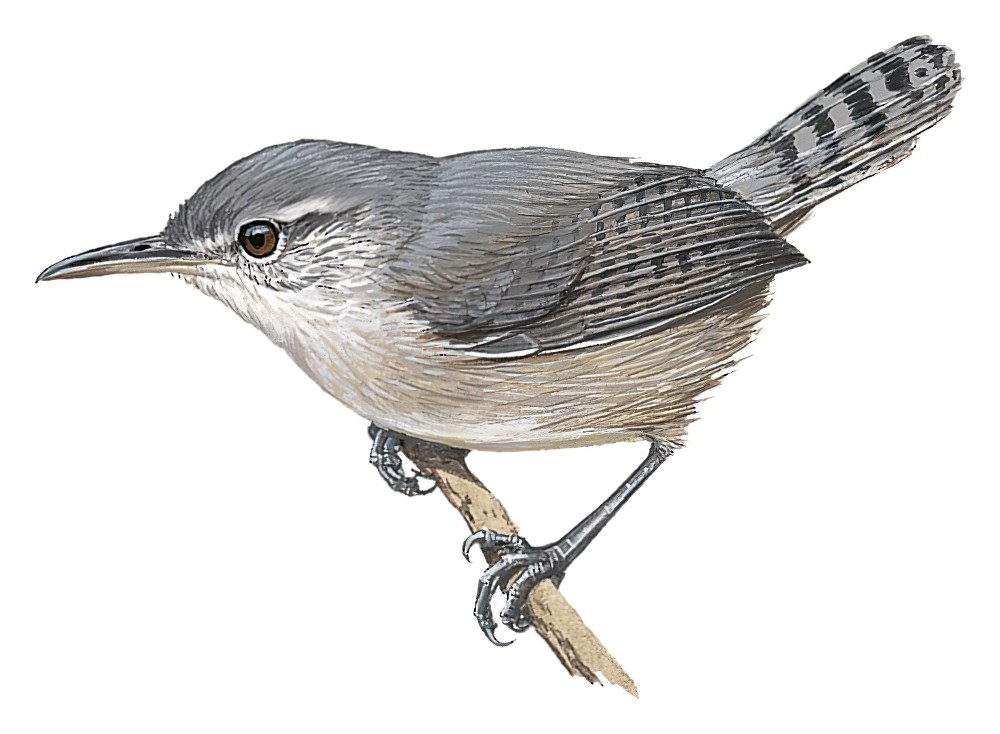Gray Wren / Cantorchilus griseus

Gray Wren
SCI Name:
Protonym: Thryophilus griseus Proc.Biol.Soc.Wash. 38 p.91
Taxonomy: Passeriformes / Troglodytidae / Cantorchilus
Taxonomy Code: grywre1
Type Locality: ? Hiutanaa, Rio Puriis, Amazonas, Brazil.
Author: Todd
Publish Year: 1925
IUCN Status: Least Concern
DEFINITIONS
CANTORCHILUS
(Troglodytidae; † Long-billed Wren T. longirostris) L. cantus song < canere to sing; Gr. ορχιλος orkhilos wren; "Wren song has long been the subject of scientific study ... as this group exhibits impressive diversity in such features as song structure, repertoire size, presence of female song, and sex-specific patterns of song use ... Cantorchilus, gen. nov. Type: Thryothorus longirostris (Vieillot). Etymology: cantus, song; orchilos, wren" (Mann et al. 2006); "Cantorchilus Mann, Barker, Graves, Dingess-Mann and Slater, 2006, Molecular Phylogenetics and Evolution, 40 (3), p. 750+. Type, by original designation, Thryothorus longirostris Vieillot, 1818." (JAJ 2021).
griseum / griseus
Med. L. griseum, griseus or grisius grey.
● ex “Crabier de Cayenne” of d’Aubenton 1765-1781, pl. 908, and “Crabier gris à tête et queue vertes” of de Buffon 1770-1783 (syn. Butorides striatus).
● ex “Brown Snipe” of Pennant 1785 (Limnodromus).
● ex “Caille brune de Madagascar” of Sonnerat 1776, and “Grey-throated Quail” of Latham 1783 (syn. Margaroperdix madagarensis).
● ex “Engoulevent gris” of de Buffon 1770-1783, and “Grey Goatsucker” of Latham 1785 (Nyctibius).
● ex “Grey Hornbill” of Latham 1787 (Ocyceros).
● ex “Manakin cendré de Cayenne” of d’Aubenton 1765-1781, pl. 687, fig. 1 (syn. Pachyramphus rufus).
● ex “Grignet” of Levaillant 1801-1804, pl. 126 (syn. Parisoma subcaeruleum).
● ex “Ara gris à trompe” of Levaillant 1801-1805 (syn. Probosciger aterrimus).
● ex “Tangara olive de la Louisiane” of d’Aubenton 1765-1781, pl. 714, fig. 1, and “Gris-Olive” of de Buffon 1770-1785 (Vireo).
● ex “Icterus cinereus Novae Hispaniae” of Brisson 1760, “Tocolin” of de Buffon 1770-1783, and “Grey Oriole” of Latham 1782 (unident.).
UPPERCASE: current genus
Uppercase first letter: generic synonym
● and ● See: generic homonyms
lowercase: species and subspecies
●: early names, variants, mispellings
‡: extinct
†: type species
Gr.: ancient Greek
L.: Latin
<: derived from
syn: synonym of
/: separates historical and modern geographic names
ex: based on
TL: type locality
OD: original diagnosis (genus) or original description (species)












